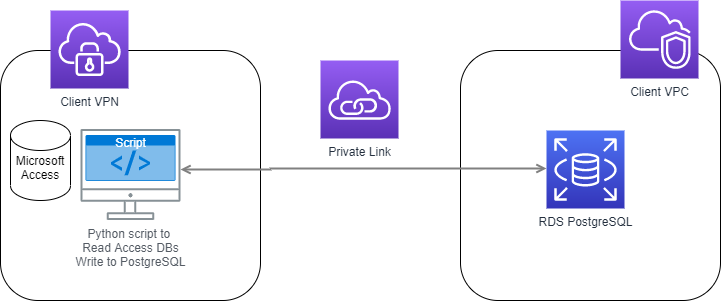Mitigating Risk Through the Migration of a Suite of Legacy Databases from On-Premise to AWS RDS PostgreSQL

Overview
CoreLogic is the largest provider of property information, analytics and property-related risk management services in Australia and New Zealand.
To continue to stay ahead of their competitors CoreLogic invest in new technology, including cloud-based solutions. As part of their continued progression they regularly audit their systems to identify better ways of doing things.
A core part of their product suite is focussed on Commercial data, however the underlying technology that was maintaining this was no longer able to meet internal requirements around security, integration, improvement, and scalability. Industry Data were appointed to review the requirements and capabilities of an underlying Microsoft Access suite of databases powering a large Commercial product. The databases were migrated and merged into an AWS RDS PostgreSQL solution, significantly reducing risk of system/data loss, as well as adopting many of the advantages of their other cloud-based products, including security, scalability and continuous deployment.
Take a look at the CoreLogic website to learn more about what they do: corelogic.com.au
Business Challenges
- Risk of severe data loss and inability to roll back changes to a point in time without significant impact
- Black-box legacy system in that very few people knew the internal workings of the system adding further risk to operations
- Require on-premise dedicated server space adding to monthly internal infrastructure fees
- No tracking of changes or visibility into system usage or other statistics
- Little system integration opportunities without manual import/export, limiting the ability to improve and expand the product
“Industry Data have recently completed the complete re-development of a legacy system which had been in operation since the mid-1990's. The work included the complete replacements of the tech stack - the back-end databases, front-end UI and everything in between. Add to that the migration of the data!
I would have no hesitation in recommending the Industry Data team. Their level of professionalism is extremely high and their ability to deal in the technical while communicating with the not-so-technical stakeholders, makes working with them a smooth experience. I would have no hesitation in engaging Industry Data again. In fact I look forward to when that time comes.”
--Brett Scott, CoreLogic Australia
